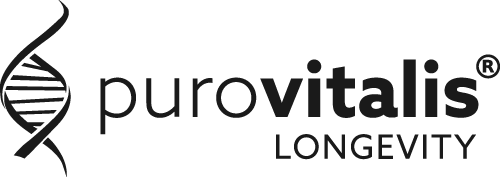
table des matières
Le vieillissement reproductif est un processus biologique naturel qui se déroule progressivement, marqué par un déclin constant de l'efficacité du système reproductif. Pour les femmes, cela signifie plus qu'une capacité réduite à concevoir - cela a également des implications importantes pour la longévité et la santé à long terme. Les ovaires, qui vieillissent plus vite que la plupart des autres organes, jouent un rôle central non seulement dans la fertilité, mais aussi dans la régulation hormonale qui affecte la solidité des os, la santé cardiovasculaire, le métabolisme et les fonctions cérébrales [1,2].
Ce blog explorera la science derrière le vieillissement reproductif, des changements biologiques dans les ovaires aux mécanismes moléculaires qui influencent la qualité des ovules. Nous nous pencherons également sur les stratégies émergentes visant à préserver la fertilité et à soutenir une longévité saine. Il est essentiel de comprendre ces changements pour que les femmes puissent prendre des décisions éclairées en matière de planification familiale, de soins préventifs et de maintien de la santé tout au long de la vie.
Le déclin naturel de la fertilité lié à l'âge
Le signe le plus évident du vieillissement reproductif est la baisse progressive de la fertilité féminine. Alors que la fertilité est généralement stable pendant la vingtaine et le début de la trentaine, elle commence à décliner de façon plus perceptible à partir de 35-37 ans. À partir de 45 ans, la conception naturelle est rare et la ménopause - généralement vers 50 ans - marque la fin des années de reproduction[3,4].
La fertilité des hommes diminue plus lentement, sans la coupure nette observée chez les femmes. Pour les couples, il est important de connaître ces différences lorsqu'ils prévoient d'avoir des enfants.
La ménopause apporte bien plus que la fin de la fertilité. La chute des niveaux d'œstrogène et de progestérone affecte la santé des os, du cœur et du cerveau, ainsi que l'humeur et l'énergie. Comme les ovaires vieillissent plus vite que la plupart des autres organes, ces changements peuvent augmenter les risques pour la santé pendant et après la ménopause, établissant un lien étroit entre le vieillissement reproductif et la santé et la longévité des femmes à long terme [1,5].
La biologie des ovaires et le vieillissement ovarien
Les ovaires jouent un rôle central dans la santé reproductive d'une femme, car ils contrôlent le cycle menstruel et libèrent des hormones essentielles à la fertilité. Avec l'âge, le nombre de follicules ovariens - les minuscules sacs qui contiennent les ovules en développement - diminue. Cette perte affecte à la fois la quantité et la qualité des ovules, ce qui rend la conception plus difficile et augmente le risque de complications lors des grossesses ultérieures [2,4].
Les impacts du vieillissement des ovaires
Le vieillissement des ovaires affecte bien plus que la fertilité - il influence de nombreux domaines de la santé d'une femme par le biais de changements dans la production d'hormones.
Symptômes de la périménopause
Lorsque les niveaux d'œstrogène et de progestérone fluctuent, de nombreuses femmes ressentent des bouffées de chaleur, des sueurs nocturnes, des cycles irréguliers et des sautes d'humeur. Ces symptômes peuvent perturber le sommeil, diminuer l'énergie et avoir un impact sur le bien-être quotidien. Pour certaines, les effets émotionnels, tels que l'irritabilité ou l'anxiété, peuvent être aussi difficiles à supporter que l'inconfort physique.
Perte de densité osseuse
Les œstrogènes jouent un rôle clé dans le maintien de la solidité des os. Lorsque les niveaux chutent pendant et après la ménopause, la dégradation des os s'accélère, ce qui augmente le risque d'ostéoporose et de fractures. Sans action préventive, ces changements peuvent affecter de manière significative la mobilité et l'indépendance plus tard dans la vie.
Risque de maladies cardiovasculaires et métaboliques
La baisse des œstrogènes après la ménopause peut entraîner des changements au niveau du cholestérol, de la santé des vaisseaux sanguins et de la sensibilité à l'insuline. Cela augmente le risque de maladie cardiaque, d'hypertension artérielle et de diabète de type 2, ce qui rend le suivi cardiovasculaire particulièrement important dans les années post-ménopausiques.
Risques de déclin cognitif
Les changements hormonaux peuvent également influencer la santé du cerveau. Les femmes ménopausées courent un risque plus élevé de troubles de la mémoire, de diminution de l'acuité mentale et d'affections neurodégénératives telles que la démence. Des stratégies proactives en matière de mode de vie et de santé - comme l'exercice régulier, une alimentation équilibrée et la stimulation mentale - peuvent aider à protéger les fonctions cognitives[5].
Les mécanismes influençant la détérioration des ovules
Les ovocytes, communément appelés cellules œuf, sont les cellules reproductrices féminines. Ce sont les cellules responsables de la transmission de l'information génétique et des caractéristiques à la génération suivante lorsqu'elles se combinent avec le spermatozoïde mâle lors de la fécondation. Les ovocytes sont produits dans les ovaires et constituent un élément crucial du processus de reproduction.
Les principaux mécanismes moléculaires contribuant à la détérioration de la qualité des ovules sont les suivants :
Séparation chromosomique
Avec l'âge, la structure qui maintient les chromosomes à l'intérieur des ovules commence à s'affaiblir. Cela peut conduire à la formation d'ovules anormaux, une condition connue sous le nom d'"aneuploïdie ovocytaire". Ce problème est une cause fréquente de difficultés à tomber enceinte, de fausses couches et de malformations congénitales. La probabilité de produire des ovules anormaux est plus élevée chez les femmes âgées de moins de 20 ans ou de plus de 35 ans.
Raccourcissement des télomères
Les télomères protègent les extrémités des chromosomes et leur raccourcissement fait naturellement partie du vieillissement des cellules, y compris des ovocytes. Le raccourcissement des télomères dans les ovocytes est lié à une diminution de la fertilité et à une apparition plus précoce de la ménopause. À mesure que le vieillissement ovarien progresse, le raccourcissement des télomères dans les ovocytes contribue à une baisse de la capacité de reproduction[3].
Pour en savoir plus sur l'influence du raccourcissement des télomères avec l'âge, cliquez ici.
Réponse aux dommages de l'ADN et mutations génétiques
Avec l'âge, l'efficacité des mécanismes de réparation de l'ADN dans les ovocytes diminue. Cela entraîne une accumulation de mutations génétiques et un risque plus élevé de problèmes de reproduction tels que l'insuffisance ovarienne prématurée (IOP). Ces facteurs génétiques sont des indicateurs clés du vieillissement ovarien.
Les dommages causés à l'ADN influencent également le processus global de vieillissement. Découvrez ici toutes les caractéristiques du vieillissement.
Espèces réactives de l'oxygène (ROS) et stress oxydatif
Le stress oxydatif augmente dans les ovocytes avec l'âge. Ce stress peut endommager l'ADN et d'autres structures cellulaires à l'intérieur des ovocytes, contribuant ainsi à une diminution de leur qualité et de leur nombre.
Dysfonctionnement mitochondrial
Les mitochondries sont essentielles à la production d'énergie dans les cellules. Dans les ovocytes, le dysfonctionnement mitochondrial est lié au vieillissement. Au fur et à mesure que les femmes vieillissent, les modifications de la fonction mitochondriale dans leurs ovules peuvent entraîner une diminution de la fertilité et sont révélatrices du vieillissement des ovaires.
Influences épigénétiques
Avec l'âge, le fonctionnement des gènes dans les ovocytes se modifie. Cela est dû à des altérations de la méthylation de l'ADN (un processus qui active ou désactive les gènes) et à des changements dans les modifications des histones (qui influencent la densité de l'ADN). Ces changements peuvent entraîner une baisse de la fertilité et sont le signe que les ovaires vieillissent.
Microenvironnement ovarien
L'environnement qui entoure les ovules dans les ovaires influence la qualité des ovocytes et change avec l'âge. Les altérations de cet environnement peuvent accélérer le vieillissement des ovocytes et entraîner l'infertilité[2,4].
Prolonger la fertilité et la santé des femmes
Avec l'allongement de l'espérance de vie, il est de plus en plus important de combler l'écart entre la durée de vie et l'espérance de vie en bonne santé. Dans le domaine de la santé reproductive, cela signifie non seulement prolonger la fertilité dans la mesure du possible, mais aussi soutenir le bien-être des femmes après les années de reproduction.
Les recherches actuelles explorent :
Les stratégies nutritionnelles et complémentaires (par ex, NMN, spermidine) pour soutenir la santé mitochondriale et la qualité des ovules [1,3]
Les antioxydants pour réduire le stress oxydatif dans les tissus ovariens
Les thérapies hormonales et non hormonales pour gérer les symptômes de la ménopause et protéger la santé à long terme
Les facteurs liés au mode de vie restent essentiels : une alimentation équilibrée, une activité physique régulière, l'absence de tabagisme, la prise en charge précoce des maladies chroniques et des bilans de santé réguliers sont autant d'éléments qui contribuent à maintenir la santé reproductive et générale.
En savoir plus : La recherche montre que la spermidine peut stimuler la fertilité
Conclusion et perspectives d'avenir
La recherche sur la longévité reproductive est un domaine en pleine expansion, qui vise à prolonger les années pendant lesquelles les femmes peuvent concevoir tout en préservant leur santé à long terme. Il s'agit de comprendre les moteurs biologiques du vieillissement ovarien et de mettre au point des interventions qui portent à la fois sur la fertilité et sur les risques pour la santé associés à la ménopause.
Grâce à la poursuite de la recherche, à la sensibilisation accrue du public et aux stratégies fondées sur des données probantes, les femmes disposeront de plus d'outils pour prendre des décisions éclairées en matière de planification familiale, de santé préventive et de longévité. Aborder le vieillissement reproductif avec des connaissances et de la préparation peut aider à assurer de meilleurs résultats en matière de santé tout au long de la vie.
Voir aussi : La NMN augmente-t-elle la fertilité chez la femme ?
Références
- Dong L, Teh DBL, Kennedy BK, Huang Z. Unraveling female reproductive senescence to enhance healthy longevity (Démêler la sénescence reproductive féminine pour améliorer la longévité en bonne santé). Cell Res. 2023;33:11-29. doi:10.1038/s41422-022-00791-0.
- Duncan FE, Confino R, Pavone ME. Le vieillissement reproductif féminin : Des conséquences aux mécanismes, aux marqueurs et aux traitements. In : Conn PM, éditeur. Manuel de Conn sur les modèles de vieillissement humain. 2e éd. Cambridge (MA) : Academic Press ; 2018. p. 109-30. doi:10.1016/B978-0-12-811353-0.00009-9.
- Yureneva S, Averkova V, Silachev D, Donnikov A, Gavisova A, Serov V, et al. Searching for female reproductive aging and longevity biomarkers. Aging (Albany NY). 2021;13(12):16873-94. doi:10.18632/aging.203206.
- Shirasuna K, Iwata H. Effet du vieillissement sur la fonction de reproduction féminine. Contracept Reprod Med. 2017;2:23. doi:10.1186/s40834-017-0050-9.
- Bhasin S, Kerr C, Oktay K, Racowsky C. Les implications du vieillissement reproductif pour la santé, la vitalité et le bien-être économique des sociétés humaines. J Clin Endocrinol Metab. 2019;104(9):3821-5. doi:10.1210/jc.2019-00315.

Effectue le suivi de plus de 50 mesures de santé avec une précision alimentée par l'IA. Commence ton essai gratuit dès aujourd'hui et prends le contrôle de ton parcours de bien-être !

conseils de longévité meilleurs exercices régimes alimentaires mode de vie sain
L'art de bien vivre une vie qui ne se mesure pas seulement en années, mais en expériences, en santé et en joie !












